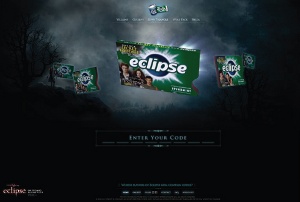Donna Wilson
This independent designer has made a highly successful business from her quirky handmade goods. Charlotte Rivers discovers how she did it
Working out of a small studio in East London, Donna Wilson is the creator and maker of a growing collection of weird and wonderful creatures, strangely shaped cushions, hand painted plates, make-it-yourself kits and much more. At just 34 years old, she is the perfect example of a young independent designer who has taken her creativity and turned it into a thriving business while still remaining true to her original ideas and inspiration. Last year she won the prestigious Designer of the Year title at the 2011 Elle Decoration Design Awards, as well as completing a highly successful collaboration with furniture makers SCP. Today Wilson sells her trademark colourful, quirky goods in over 25 countries.

Born and raised in the middle of the Scottish countryside, Wilson, like many designers, was creative from a young age. “I have always been into drawing, doodling and making things, ever since I could hold a pencil,” she explains. “I didn’t know exactly what I wanted to do when I was little but I did know it was going to be something to do with art and design. My grandma was a great inspiration to me, she taught me to paint and to look at objects and study what I could see. She also tried to teach me to crochet and to knit when I was really young but I just didn’t have the patience. Even now I’m not very patient with hand knitting and much prefer to machine knit.”
Wilson moved from rural Scotland to Aberdeen to study Constructed Textiles at Grays School of Art and, following her graduation, worked as an assistant designer at a knitwear company. She then returned to college to complete her MA in Mixed Media at the Royal College of Art (RCA), London. It was then that she began designing, producing and selling her distinctive products in stores such as Couverture and Supra Girls London. “I started by creating the long leggy dolls, which are still in the collection. My designs then evolved into slightly more disturbing knitted creatures with two heads, or extra long legs, each with their very own character – the more peculiar the better.”
Wilson’s end of year show at the RCA was a sell out and paved the way for starting up her business in earnest. “I knew I wanted to start my own business but this really gave me the confidence to do it,” she explains. “I then exhibited at Designers Block which opened up my work to a wider audience, and I’d never have done that had it not been for the RCA. I also set up a website pretty much straight after college which featured my designs. I felt it was important for shops and potential customers to see what I did. It was a basic site but it worked. Since then it’s grown a lot and is really fantastic now – we sell from it to customers all over the world.”

However, this is the only place Wilson sells her goods online, preferring to wholesale her goods to ‘bricks and mortar’ shops only. She does this for a number of reasons. “Firstly, for me it’s really important for our customers to feel and see the quality of the goods we make,” she explains. “It’s such a different experience seeing something in the flesh than it is seeing it online. Because of this we prefer to give priority to the stockists that have beautiful shops and overheads to match, and who we know and visit in person. Also, I think that if we were to sell to lots of online-only companies then we would be in danger of losing control over our brand. Of course, on the flip side of that, we do sell on our own website,” she adds. “It’s nice to be able to offer customers the entire range no matter where they are in the world.”
The range began as a collection of leggy dolls and two headed creatures, and has since grown into a extensive collection of goods. The strange creatures remain – Cyril Squirrel Fox, Ginge Cat, Ed Red Head, Pierre and more – but they have now been joined by a range of ceramic goods; furnishings, including cushions and blankets; clothing such as hats and scarves; greeting cards and make-your-own kits.

As the collection has grown and her products have increased in popularity, Wilson has continued to create designs based on honest inspiration, as opposed to what might retail well. “I always try to be true to myself, I think it’s really important to be happy with my own work so that I feel passionate about it,” she explains. “If I just try to design things that I think will sell then they lose meaning to me. My work is for a niche market – what I do is special, a little bit different, and I like that.”
For Wilson inspiration comes from many sources, but there is a clear Scandinavian influence within her work, as well as that of nature. “I grew up in the middle of the Scottish countryside so that has always been a big inspiration for me,” she explains, “but I’m generally inspired by everything – the landscape, music, dreams, magazines, ceramics, people. Sometimes I just see a tiny snippet of something that triggers an idea, which is then developed into a product. A tiny piece of cloth, a picture in a book or a found object on my travels.
“Recently I’ve been working on a project designing furniture and textiles for an inn that is being built on a remote island off the coast of Newfoundland in Canada. To get there you have to travel by boat, and it has a fantastic history of knitting and crafts,” she explains. “I came back feeling really inspired by its landscape, boats and houses. It’s been a big influence for me, as have places like Iceland and Norway.”
As well as her own collection of products, Wilson has worked on numerous other projects over the years. These include designing packaging for a Japanese macaroon brand, creating work as part of a show at The Future Perfect, New York and designing props for music videos. However, her creative process tends to be the same no matter what project she is working on. She will begin with initial sketches in a notebook before moving on to more detailed drawings or paintings to enable her to experiment with different colours. The next stage is either to refine her drawings using Illustrator or to move on to the knitting machine, depending on what she is creating.
“I use Illustrator as it is the quickest way to create artwork and patterns and generate imagery in general,” she explains. “For the most part I taught myself how to use, it as well as Photoshop. Even though I like being hands-on and prefer using a paint brush to a mouse sometimes time is limited so using Illustrator or Photoshop is the best and quickest way to communicate ideas. That said, it’s important to me not to be restricted by the computer when working.

“For knitted products, such as the cushions, I use a knitting program connected to my knitting machine that enables me to try out the designs for real,” she adds. “For me, it’s important to try designs out myself on the machine before they are sent off to the manufacturer so we can really check colour, pattern, scale and so on. I always need to see something in the flesh first before I am able to fully visualise it.”
Once complete the designs are sent to Wilson’s manufacturers, who are all based in the UK – something that is important to her. “I like to think we can play a tiny part in helping the UK economy, particularly by keeping our manufacturing here and trying to keep our skills from disappearing completely,” she explains. “At one point lots of large companies used manufacturers in the UK – there was a large knitting industry in the Borders, for example – but now it is so much cheaper to go overseas. However, I do think people are becoming more aware of where we get things from, in food or in fashion. I hope we can build on this and keep our industries here going.”
Wilson’s latest collection is heavily influenced by her aforementioned trip to Newfoundland, and features nautical-themed baby blankets, hot water bottles, scarves with Scandinavian-style houses and cushions adorned with bold geometric and Icelandic-style patterns. Animals continue to feature as well, with owl and bird ceramics. She is also currently working on a solo show at the Yorkshire Sculpture Park, which will open this November. “The show is about endangered species and we are making a knitted installation of strange trees and odd objects, as well as a range of limited edition prints,” she explains. “It’s a new avenue for me, and so will be a great opportunity to develop some new work. Also, I think it’s good to try different things. Working in the creative industries today, young designers like myself have the power to be innovative, inventive and create solutions. It’s a very exciting profession to be in, and going forward I hope to continue to develop interesting, happy, exciting, beautiful, friendly products that make people smile.”

Thank you for reading 5 articles this month* Join now for unlimited access
Enjoy your first month for just £1 / $1 / €1
*Read 5 free articles per month without a subscription

Join now for unlimited access
Try first month for just £1 / $1 / €1
Get the Creative Bloq Newsletter
Daily design news, reviews, how-tos and more, as picked by the editors.

The Creative Bloq team is made up of a group of art and design enthusiasts, and has changed and evolved since Creative Bloq began back in 2012. The current website team consists of eight full-time members of staff: Editor Georgia Coggan, Deputy Editor Rosie Hilder, Ecommerce Editor Beren Neale, Senior News Editor Daniel Piper, Editor, Digital Art and 3D Ian Dean, Tech Reviews Editor Erlingur Einarsson, Ecommerce Writer Beth Nicholls and Staff Writer Natalie Fear, as well as a roster of freelancers from around the world. The ImagineFX magazine team also pitch in, ensuring that content from leading digital art publication ImagineFX is represented on Creative Bloq.
